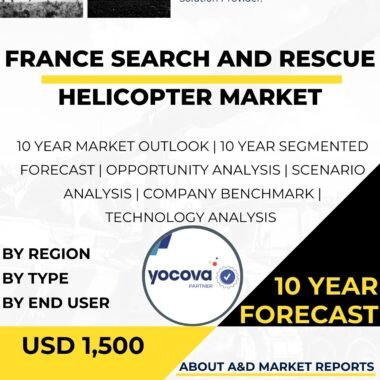Description
Search and rescue (SAR) operations are critical components of Canada’s emergency response efforts, especially in its vast and rugged landscapes where people frequently encounter perilous situations. Helicopters play a vital role in these operations, providing rapid and versatile response capabilities for rescuing individuals in distress. Canada’s search and rescue helicopters have evolved over the years, incorporating advanced technologies and specialized equipment to enhance their lifesaving capabilities and strengthen the nation’s resilience in times of crisis.
The history of search and rescue aviation in Canada can be traced back to the early 20th century when aircraft were first employed for aerial surveillance and emergency response. As the country’s aviation infrastructure expanded, the Canadian government recognized the need for a dedicated and organized SAR capability. In 1944, the Royal Canadian Air Force (RCAF) established the Air Sea Rescue (ASR) organization, which marked the formal inception of Canada’s search and rescue operations.
Helicopters emerged as key assets in SAR missions due to their ability to hover, maneuver in confined spaces, and execute precise and rapid extractions. The Canadian military initially employed military helicopters for SAR tasks, but the complexities and specific requirements of civilian SAR missions led to the development of specialized search and rescue helicopter units.
The Canadian Coast Guard (CCG) has played a prominent role in maritime search and rescue operations. The CCG’s fleet of search and rescue helicopters is equipped with advanced avionics, radar systems, and rescue hoists. These helicopters conduct lifesaving operations in marine environments, such as rescuing mariners from distressed vessels, evacuating injured crew members from offshore platforms, and providing support during natural disasters.
In 1978, the Canadian government introduced the Search and Rescue New Initiatives Fund (SAR NIF) to enhance and modernize SAR capabilities across the country. This fund has been instrumental in acquiring new equipment, including search and rescue helicopters, to bolster the nation’s emergency response capabilities.
One of Canada’s most prominent search and rescue helicopters is the Sikorsky CH-148 Cyclone, which was introduced to replace the aging CH-124 Sea King helicopters. The Cyclone is a state-of-the-art maritime helicopter equipped with advanced avionics, sensors, and communication systems. Its multifunctional capability allows it to perform various SAR tasks, including search missions, medical evacuations, and personnel recovery operations.
Another essential SAR helicopter in Canada’s fleet is the Airbus H225 Super Puma. This medium-sized helicopter is renowned for its long-range capabilities, making it suitable for conducting extended searches over vast and remote regions. The H225 is equipped with advanced navigation systems, weather radar, and infrared cameras, enabling SAR crews to locate and rescue individuals in challenging environmental conditions.
In addition to the military and Coast Guard helicopters, civilian operators, such as the Helicopter Association of Canada (HAC) members, actively support SAR missions across the country. These private operators work in close coordination with the Canadian Forces and other government agencies to ensure a unified and effective response to emergencies.
SAR helicopter crews undergo rigorous training to prepare for the challenges they may encounter during operations. Training includes exercises in navigation, emergency procedures, rescue techniques, and survival skills. Moreover, SAR crews often collaborate with other emergency response agencies, such as ground search and rescue teams, paramedics, and law enforcement, to execute coordinated and successful missions.
The deployment of SAR helicopters is not limited to traditional land and maritime operations. Canada’s vast northern territories and remote areas present unique challenges, and specialized helicopters, such as the Bell 429 GlobalRanger, are employed to address these specific needs. The Bell 429’s high-altitude capabilities and ability to operate in extreme weather conditions make it a valuable asset for SAR missions in northern and Arctic regions.
The integration of technology has revolutionized SAR operations in Canada. Advanced sensors and imaging systems, including infrared cameras and night vision equipment, allow SAR crews to detect and locate individuals in distress, even in low-visibility conditions. Satellite communication systems enable real-time coordination and information sharing between SAR helicopters and ground control centers, optimizing response efforts and resource allocation.
SAR helicopters are equipped with specialized equipment, such as rescue hoists, stretchers, and medical kits, to provide immediate medical attention to individuals in need. The ability to conduct in-flight medical care is critical for enhancing the chances of survival for those requiring urgent medical attention, especially in remote areas where access to medical facilities is limited.
Canada’s SAR helicopters are deployed for a wide range of missions, including responding to aviation accidents, conducting mountain rescues, aiding in natural disaster relief efforts, and supporting law enforcement operations. These versatile helicopters and their highly trained crews are often the difference between life and death for individuals facing life-threatening situations.
As Canada continues to invest in its SAR capabilities, the country is exploring innovative technologies and operational strategies to enhance its emergency response efforts. Unmanned aerial systems, commonly known as drones, are being integrated into SAR operations to provide additional reconnaissance capabilities and assist in locating missing persons.
Furthermore, research and development efforts are ongoing to explore the use of artificial intelligence (AI) and machine learning algorithms in SAR operations. AI-driven data analysis can optimize search patterns, identify potential hotspots, and improve the efficiency of SAR missions, thereby increasing the likelihood of successful outcomes.
In conclusion, Canada’s search and rescue helicopters are indispensable assets in the nation’s emergency response framework. Equipped with advanced technology, specialized equipment, and highly trained crews, these helicopters play a crucial role in locating and rescuing individuals in distress, whether in the vast maritime regions, remote northern territories, or challenging mountainous terrain. The dedication and professionalism of SAR crews, coupled with continuous advancements in SAR technology, reinforce Canada’s resilience and commitment to protecting the lives of its citizens and visitors in times of crisis.




